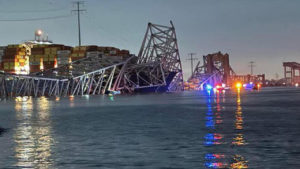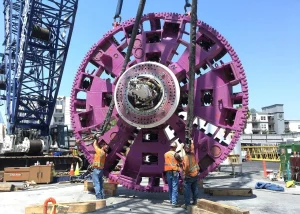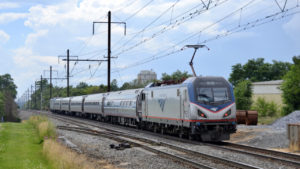Collins Engineers receives award for EJ&E Bridge roll-in design
Written by jroodCollins Engineers, Inc., a Chicago civil and structural engineering firm, received an Honor Award in the American Council of Engineering Companies of Illinois (ACEC-IL) Engineering Excellence Award competition for the EJ&E Bridge Roll-In design.
The Elgin, Joliet & Eastern (EJ&E) Railway Bridge Number 552, now owned and maintained by CN, was originally built in 1888 with a movable vertical lift span dating from the 1930s. Located on the Illinois River approximately 20 miles southwest of Joliet, Ill., the bridge had the distinction of being the most frequently hit bridge spanning a navigable waterway in the United States. It was struck by navigation traffic 170 times between 1992 and 2001. CN made the decision to replace the existing span with a longer span to increase the horizontal clearance under the bridge.
Collins was approached by the project’s contractor, McHugh Construction and its erection sub-contractor, Danny’s Construction, to evaluate the feasibility of designing a temporary erection and launching runway structure that could be used to support the erection of a replacement 1,100-ton bridge span and allow it to be moved into place. The original lift span was 150 feet long, providing only 120 feet of clearance for river traffic. The new movable span has a main span length of 348 feet and provides 300 feet of horizontal clearance between the fenders, more than double the original. Principal funding was provided through the Truman-Hobbs Act, which funds the replacement of bridge spans that constitute hazards to navigation.
Because of the high volume of river traffic in this area, and the need to provide minimal disruption to rail service for customers south of the bridge, the closure of the river and the bridge was limited to 84 hours for the removal of the existing span and installation of the new span. Collins, McHugh, and Danny’s built the bridge on a temporary runway adjacent to the bridge. Such a method improved crew utilization, as well as aided in meeting the stringent time constraints for the installation of the new span. An early cost-saving decision was to use the existing large concrete-filled dolphins at either side of the channel as the launch and receiving points for the span, which significantly reduced costs. Once the bridge was ready, a jacking and roller system was used to move the replacement span along the temporary runway and launch the span across the existing 120-foot draw. This process was accomplished within the allotted 84-hour window.
The project’s final budget was $44.6 million-$1 million over the original budget due to factors unrelated to the use of the runway structure. Collins’ portion of the project budget was $4 million.





